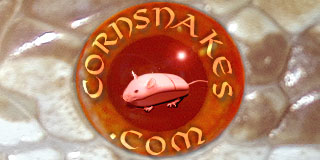Lennycorn
Just see the truth
I knew Airenlow was going to say that
I like rump roast... so send pictures of rumps to [email protected] so that I can make my decision on who to eat first!
Bring on the dingles!
I knew Airenlow was going to say that
I like rump roast... so send pictures of rumps to [email protected] so that I can make my decision on who to eat first!
Did you actually read your link? It's not talking about dogs that are surviving out in the wild and filling a niche where wolves would be. It's talking about scavenging street dogs. Here's a link for you;Yes, and a domestic dog could survive and breed in the wild as well. http://www.naiaonline.org/articles/...y-dog-population-crisis-and-humane-relocation
Are all domestic corns identical in every way to wild corn snakes of a given locality? Given that many different localities are breed together to achieve various morphs... I'd say there is some variance as breeders do not always simply breed one locality to a member of the same locality. Are different localities or rare new morphs not breed to other morphs that may have appeared in another corn snake from a completely different local? This would not happen in nature. Have hybrids already mixed or intergrades already been selected for and parentage lost in such a manner as to leave some corn snakes at least with a questionable heritage? I would say change of diet, temperament, color.... or simply breeding locals together that would never occur on their own in the wild if not introduced by man to be significant changes. I'll agree we have come much further with the dog, but what has been done with the corn snake is no small achievement either. Whether a domesticated animal or an animal that man has selectively bred for traits and whether that animal can exist on its own in nature if released.... interesting point your trying to make there as well. Many animals selectively bred by man can breed with their wild counterparts. Turkeys come to mind as one such example. Of course, some breeds bred by man can no longer reproduce naturally at all.
Bring on the dingles!
Did you actually read your link? It's not talking about dogs that are surviving out in the wild and filling a niche where wolves would be. It's talking about scavenging street dogs. Here's a link for you;
http://www.dpi.vic.gov.au/agricultu...als/wild-dog,-dingo-dog-hybrids-feral-or-wild
This one has religious aspects too.........
http://creation.com/the-australian-dingo-a-wolf-in-dogs-clothing
Is this the way you talk to everyone, any subject you don't answer with a dissertation. How fitting is it you bring up turkeys.
I'd hazard that there are modern breeds of dog that would never survive without human help though, those that are very far removed from the generic, wolf/coyote/dingo body type. Brachycephalic types that keel over if over excited and cannot whelp naturally, for a start. Cats do better without us, probably because most breeds haven't been altered in ways that would affect their survival chances, but again the heavy double coat and squashed faces of modern persians would most likely be a handicap.Excellent info Diamondlil. And yes, I do think your posts as well as mine bring credence to the fact that domesticated dogs can indeed survive without man's help. Rodents often survive in the home, off our waste, and yes... even in the field. So, all relevant information where it concerns survivability of a domesticated animal or as you linked, hybrids thereof.
I thought it was quite fitting as well... meaning the turkey reference. As for supplying a lengthy reply, I find that even with a lengthy reply it is possible for it to be greatly misunderstood and even more so with a short reply. One has to wonder though, how often is it intentional... meaning that the point is not really misunderstood... but rather ignored or sidetracked due to lack of evidence or logic to the contrary?
I'd hazard that there are modern breeds of dog that would never survive without human help though, those that are very far removed from the generic, wolf/coyote/dingo body type. Brachycephalic types that keel over if over excited and cannot whelp naturally, for a start. Cats do better without us, probably because most breeds haven't been altered in ways that would affect their survival chances, but again the heavy double coat and squashed faces of modern persians would most likely be a handicap.
Perhaps because the hobby is newer?
This can only be said to a degree though. Many morphs wouldn't survive, would scale-less or micro scale? Would they be more prone to diseases? You can certainly breed for larger corns or smaller corns.
I heard a thing on Coast to Coast, or whatever that overnight show is, that they weren't aliens, they were angels. What is your opinion on that, Richard?
If they would not survive, then why do wild corns sometimes have simple recessive color/pattern/scale-modifier genes to begin with? They must have been useful at some time or place?
If they would not survive, then why do wild corns sometimes have simple recessive color/pattern/scale-modifier genes to begin with? They must have been useful at some time or place?
In today's Paper (Dayton Daily News), there was a Story about A wooly Mammoth carcass found in russia. What's unique about this find? At the time of excavation....the temps were -7 -10 degree F. Dark Red Blood of the Mammoth flowed Freely when poked with a pick. How can this be?
